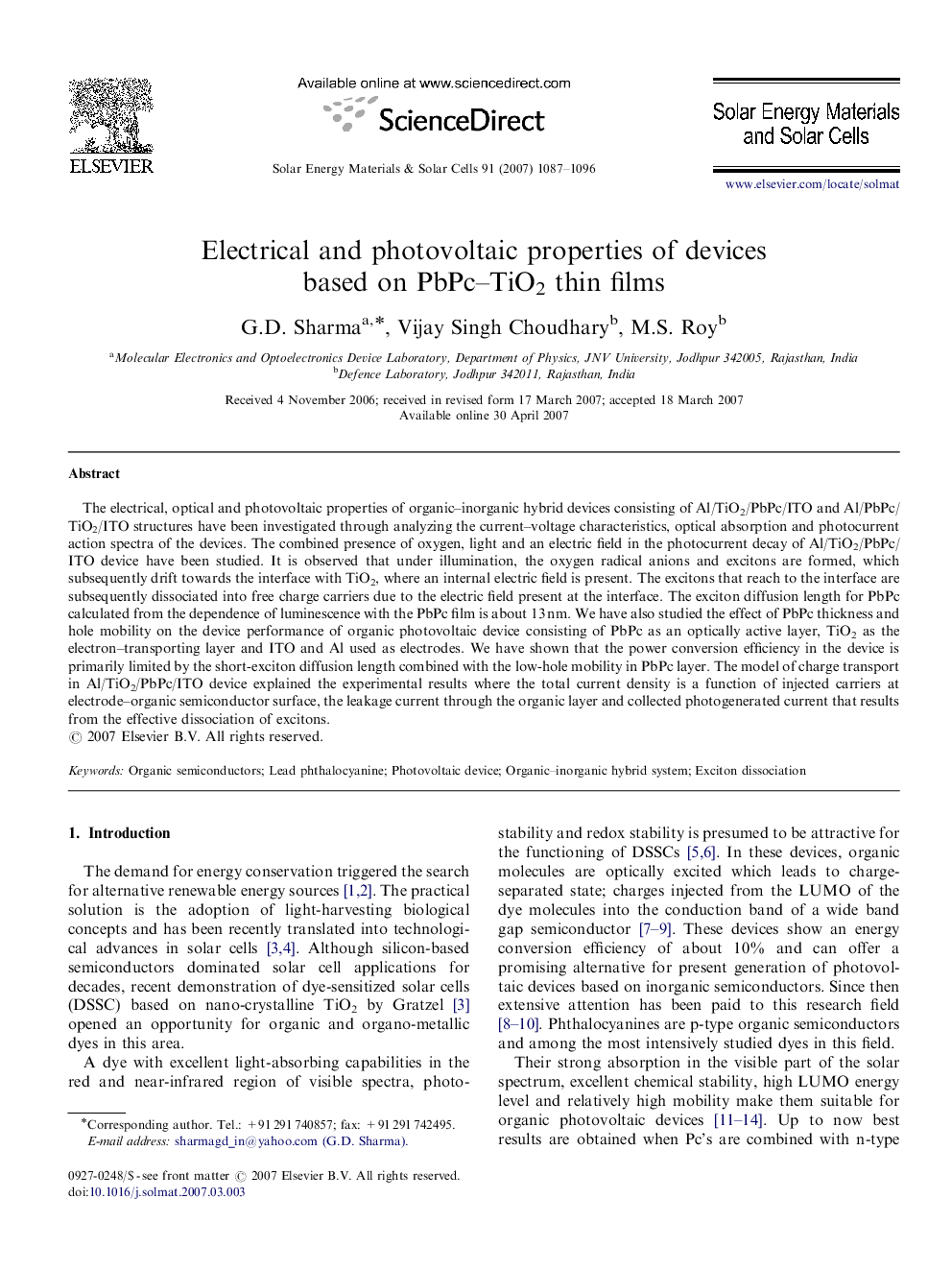| Article ID | Journal | Published Year | Pages | File Type |
|---|---|---|---|---|
| 81096 | Solar Energy Materials and Solar Cells | 2007 | 10 Pages |
The electrical, optical and photovoltaic properties of organic–inorganic hybrid devices consisting of Al/TiO2/PbPc/ITO and Al/PbPc/TiO2/ITO structures have been investigated through analyzing the current–voltage characteristics, optical absorption and photocurrent action spectra of the devices. The combined presence of oxygen, light and an electric field in the photocurrent decay of Al/TiO2/PbPc/ITO device have been studied. It is observed that under illumination, the oxygen radical anions and excitons are formed, which subsequently drift towards the interface with TiO2, where an internal electric field is present. The excitons that reach to the interface are subsequently dissociated into free charge carriers due to the electric field present at the interface. The exciton diffusion length for PbPc calculated from the dependence of luminescence with the PbPc film is about 13 nm. We have also studied the effect of PbPc thickness and hole mobility on the device performance of organic photovoltaic device consisting of PbPc as an optically active layer, TiO2 as the electron–transporting layer and ITO and Al used as electrodes. We have shown that the power conversion efficiency in the device is primarily limited by the short-exciton diffusion length combined with the low-hole mobility in PbPc layer. The model of charge transport in Al/TiO2/PbPc/ITO device explained the experimental results where the total current density is a function of injected carriers at electrode–organic semiconductor surface, the leakage current through the organic layer and collected photogenerated current that results from the effective dissociation of excitons.
